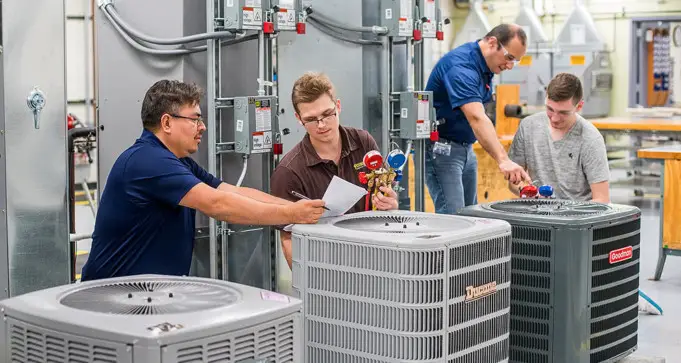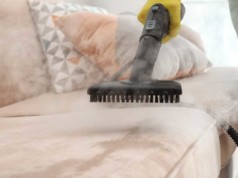Most of you might not know this but without regular maintenance of your HVAC system, you can face several health-related risks. Filthy ducts are a typical issue among owners since junk and dirt settle inside them.
Pet hair, dust, soil, and different contaminants gather in the ducts after some time, which can hinder airflow and cause the quality of the air you breathe in to drop.
Among those with allergies and breathing problems, the indications can become worse, including headaches, congestion, breathing issues, sore throats, and eye infection.
If the unit is pulling an excessive amount of moisture from the air, it can dry out your skin and your eyes, prompting aggravation and irritation. Humidifiers can help solve this issue; however, you need to get your HVAC framework looked at to check if everything works fine.
Using items and gadgets can help improve the quality of the air you breathe in, for example, an air purifier or ventilator. Any biological development in the ducts can prompt spores all around.
Ensuring that the channels are perfect and your HVAC system is well maintained will likewise lessen the danger of poor indoor air quality, keeping you and your family safe and healthy.
A large number of furnaces use natural gas or oil to give heat, so a break could be hazardous to the health of you and your family. Carbon monoxide is dangerous and can cause death.
On the off chance that you have a heater that uses oil or gas, and you may experience influenza-like side effects, it is suggested that you open the windows, leave your home quickly, and call someone for inspection.
There are a few preventative maintenance measures you can do yourself in addition to scheduling a yearly or biannually visit from your HVAC Technician:
1. Locate and Clean the Filters
- Traditional split systems, consisting of an indoor, evaporator-coil furnace and an outdoor, condenser/compressor unit is similar to the more modern air handler and heat pump system in that they both have one main disposable filter located nearby or inside the indoor unit. Both systems may also include other filters located in the return vent registers or supply ducts.
- Older homes may utilize a furnace or a boiler for heating, and have window condensers for cooling air. Window units have a single reusable filter accessible by a removable or hinged cover. A furnace uses the “forced air” or air heating method of delivery by ducts to registers. A boiler uses the “hydronic” or water heating method of delivery by copper or iron pipes to radiators. Both have at least one filter, but replacing the boiler filter is a little more complicated and requires tools to remove it from a secured housing component attached directly to the boiler unit body.
- A package system — sometimes referred to as an outdoor cabinet unit — has an evaporator coil, condenser, and compressor working together to produce heat or cool air as needed. It has a filter located in its cabinet but could have additional filters in the return vent registers or the supply duct.
- A mini-split system is ductless but has two or three reusable filters located in each one of the mounted units.
2. Inspect Your System
Check your indoor/outdoor HVAC system units for visible damage or loose parts. Listen for unusual noises and take note of any odd odors or leaks coming from or near the HVAC units.
Delair technicians can answer any questions and help you troubleshoot the problem over the phone before they make a service or repair visit. Don’t attempt to fix it on your own.
3. Exterminate Pests
Look for signs of rodents or bugs, nesting in or near units, and safely set up pest traps if needed.
4. Clean Around HVAC Unit
Shut off the HVAC system and remove any vegetation growing near or in the condenser/compressor or heat pump cabinets. If possible, clear at least two feet of space around the outdoor unit and remove any overhanging tree branches.
5. Weatherproof Your Home
Sealing air leaks and adding extra insulation can decrease energy costs and prolong the life of your HVAC system.
There are many small DIY projects for weatherproofing that can make your home more comfortable for all climates:
- Apply weather-stripping, “draught-excluders,” and brush strips to doors.
- Apply weather-stripping to windows and cover with insulated curtains.
- Seal cracks and fill holes in walls and floors.
- Cover floors with carpet.
- Repair cracks and holes in the roof.
Investing a little money and time on a few simple measures will help you avoid large HVAC-related costs in the future.










